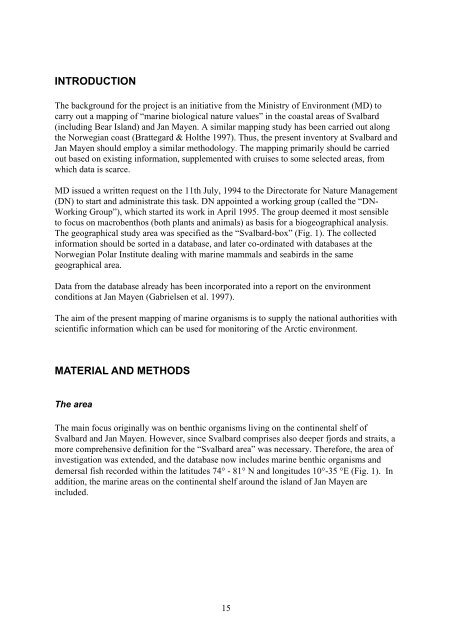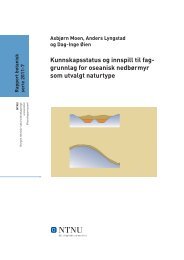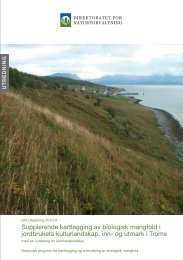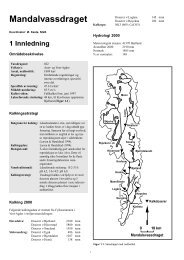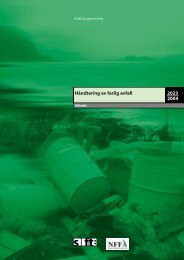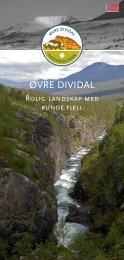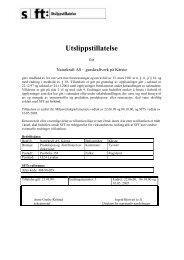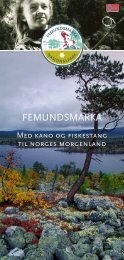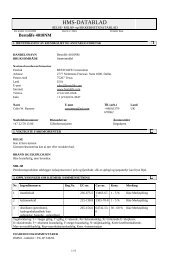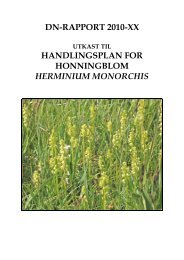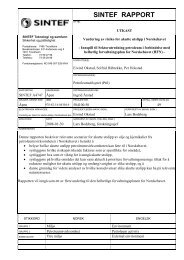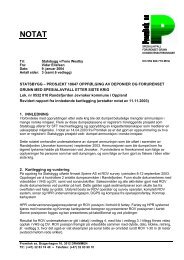Distribution of marine, benthic macro-organisms at Svalbard ...
Distribution of marine, benthic macro-organisms at Svalbard ...
Distribution of marine, benthic macro-organisms at Svalbard ...
Create successful ePaper yourself
Turn your PDF publications into a flip-book with our unique Google optimized e-Paper software.
INTRODUCTION<br />
The background for the project is an initi<strong>at</strong>ive from the Ministry <strong>of</strong> Environment (MD) to<br />
carry out a mapping <strong>of</strong> “<strong>marine</strong> biological n<strong>at</strong>ure values” in the coastal areas <strong>of</strong> <strong>Svalbard</strong><br />
(including Bear Island) and Jan Mayen. A similar mapping study has been carried out along<br />
the Norwegian coast (Br<strong>at</strong>tegard & Holthe 1997). Thus, the present inventory <strong>at</strong> <strong>Svalbard</strong> and<br />
Jan Mayen should employ a similar methodology. The mapping primarily should be carried<br />
out based on existing inform<strong>at</strong>ion, supplemented with cruises to some selected areas, from<br />
which d<strong>at</strong>a is scarce.<br />
MD issued a written request on the 11th July, 1994 to the Director<strong>at</strong>e for N<strong>at</strong>ure Management<br />
(DN) to start and administr<strong>at</strong>e this task. DN appointed a working group (called the “DN-<br />
Working Group”), which started its work in April 1995. The group deemed it most sensible<br />
to focus on <strong>macro</strong>benthos (both plants and animals) as basis for a biogeographical analysis.<br />
The geographical study area was specified as the “<strong>Svalbard</strong>-box” (Fig. 1). The collected<br />
inform<strong>at</strong>ion should be sorted in a d<strong>at</strong>abase, and l<strong>at</strong>er co-ordin<strong>at</strong>ed with d<strong>at</strong>abases <strong>at</strong> the<br />
Norwegian Polar Institute dealing with <strong>marine</strong> mammals and seabirds in the same<br />
geographical area.<br />
D<strong>at</strong>a from the d<strong>at</strong>abase already has been incorpor<strong>at</strong>ed into a report on the environment<br />
conditions <strong>at</strong> Jan Mayen (Gabrielsen et al. 1997).<br />
The aim <strong>of</strong> the present mapping <strong>of</strong> <strong>marine</strong> <strong>organisms</strong> is to supply the n<strong>at</strong>ional authorities with<br />
scientific inform<strong>at</strong>ion which can be used for monitoring <strong>of</strong> the Arctic environment.<br />
MATERIAL AND METHODS<br />
The area<br />
The main focus originally was on <strong>benthic</strong> <strong>organisms</strong> living on the continental shelf <strong>of</strong><br />
<strong>Svalbard</strong> and Jan Mayen. However, since <strong>Svalbard</strong> comprises also deeper fjords and straits, a<br />
more comprehensive definition for the “<strong>Svalbard</strong> area” was necessary. Therefore, the area <strong>of</strong><br />
investig<strong>at</strong>ion was extended, and the d<strong>at</strong>abase now includes <strong>marine</strong> <strong>benthic</strong> <strong>organisms</strong> and<br />
demersal fish recorded within the l<strong>at</strong>itudes 74° - 81° N and longitudes 10°-35 °E (Fig. 1). In<br />
addition, the <strong>marine</strong> areas on the continental shelf around the island <strong>of</strong> Jan Mayen are<br />
included.<br />
15


